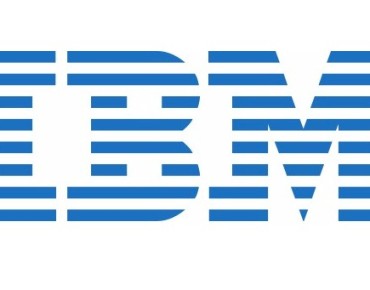New IBM Xeon Server Designs Leverage Flash

Big Blue will kick off the new season of server announcements at an event held at the New York Stock Exchange on January 16 and in a webcast that will be hosted by the top executives in its System x division on that same day.
The word on the street is that IBM will have a new system architecture incorporating Xeon processors from Intel and various kinds of flash technologies. Compatible X86 processors from Advanced Micro Devices were not mentioned in the webcast invitation, which you can see at this link. This is not surprising since IBM, like other server makers, has focused increasingly on Xeon processors in its System x rack and tower servers, BladeCenter blade servers, and PureFlex converged systems in recent years.
The server announcement will have a number of themes, including a "fit for purpose" design for machines that tunes hardware for specific workloads. IBM is also promising that the new machines will have higher performance than existing machines on analytics and database applications. And as you might expect, there will be a cloud angle and a virtualization angle to the new systems, too.
Given the executives who are attending the event, it looks like the new architecture will span various IBM product lines that incorporate Xeon processors. Adalio Sanchez, who is general manager of the System x division at IBM, is hosting the webcast launch. Alex Yost, who is vice president of the PureFlex, System x, and BladeCenter, will also make a presentation, and so will Michael Kuhn, who is the vice president in charge of the Flash Systems division. Among other things, Kuhn handled the acquisition of flash adapter and array maker Texas Memory Systems back in the summer of 2012.
Last fall, IBM launched the Flash Adapter 90 adapter card for its Power Systems machines running the AIX variant of Unix, and it may be plugging this card, which hails from the Texas Memory Systems acquisition, into its System x and PureFlex machines now. The Flash Adapter 90 card has 900 GB of eMLC flash memory and plugs into PCI-Express 2.0 server slots; it delivers 325,000 I/O operations per second on random reads and can deliver 1.2 GB/sec of throughput on sequential reads and 700 MB/sec on sequential writes. IBM could be integrating this card with the Xeon server line. But that would not constitute much of an architectural change.
IBM has also been working with SanDisk to get its flash-based Memory Channel Storage, which plugs 200 GB and 400 GB flash memory modules into main memory slots on servers, certified to work on selected models of the System x server line to accelerate trading and other applications. These may be part of the new servers.
SanDisk has made the flash-based DIMMs using a SATA-to-memory protocol converter created by Diablo Technologies, and then has created drivers that let the flash memory sticks that are plugged into the main memory slots look like persistent storage instead of main memory. The memory bus has significantly lower latency and higher bandwidth than the PCI-Express bus that PCI-based flash adapter cards had to use to link to the processor complex, and thus flash can be hammered at something closer to its full potential.
Jeffrey Birnbaum, CEO at 60East Technologies, which makes messaging middleware for financial services companies, was showing off the benefits of NUMA tuning on its Advanced Message Processing System back at the HPC on Wall Street event in September last year, and added in passing that 60East was testing IBM servers with the SanDisk/Diablo flash memory sticks to push performance even further. Diablo and 60East shared a booth at The Trading Show financial services conference in New York in early December as well, talking up Memory Channel Storage.
In early tests, 60East put eight of the 200 GB flash sticks (for a total of 1.6 TB of flash) into the System x server memory slots as well as 128 GB of real DDR3 main memory, and was able to push 4.16 million messages per second on a two-socket Xeon E5 v1 server. Without the flash memory sticks, the same server could only handle 1.18 million messages per second.
Whatever IBM is up to with its new Xeon system designs, it will certainly not be restricted to the financial services market. And IBM will probably not be able to talk about the impending "Ivy Bridge-EX" Xeon E7 v2 processors from Intel, which started shipping to server makers as 2013 was coming to a close and which are expected to be announced in the coming months. But whatever architecture IBM does come up with for its Xeon servers, the Xeon E7 v2 chips will no doubt play an important role.
There is an outside possibility that Big Blue could even get back into X86 chipset design, which it did to differentiate its high-end systems a few years back. The chipset extensions that IBM created for its HX5 blade servers back in 2010 for the Xeon 7500s (predecessors to the Xeon E7 v2 chips) allowed for an external memory enclosure called the Max5 to boost the memory slots on a two-socket blade from 16 slots to 48 slots. IBM could do something similar with a new generation of Xeon servers, or come up with an even more clever way of mixing flash memory, main memory, and processing.
We'll find out soon enough.










